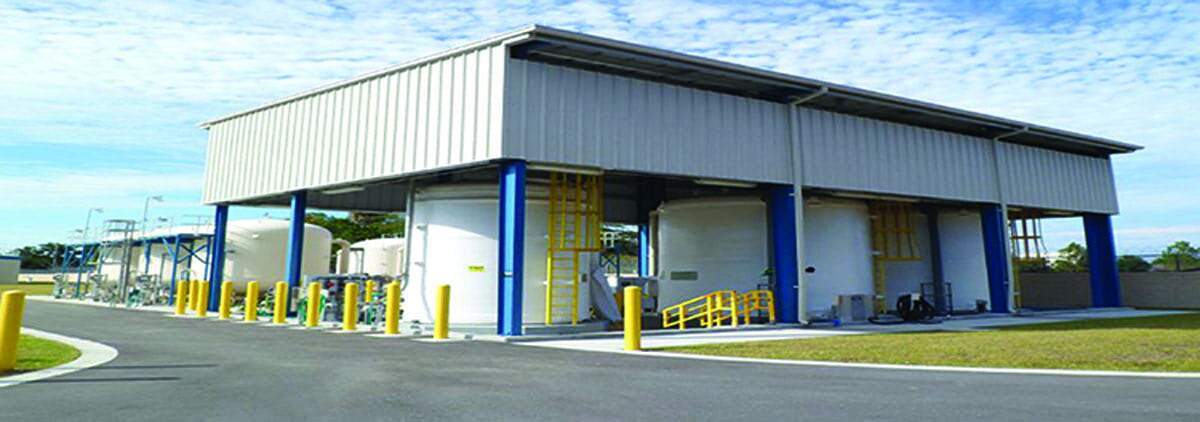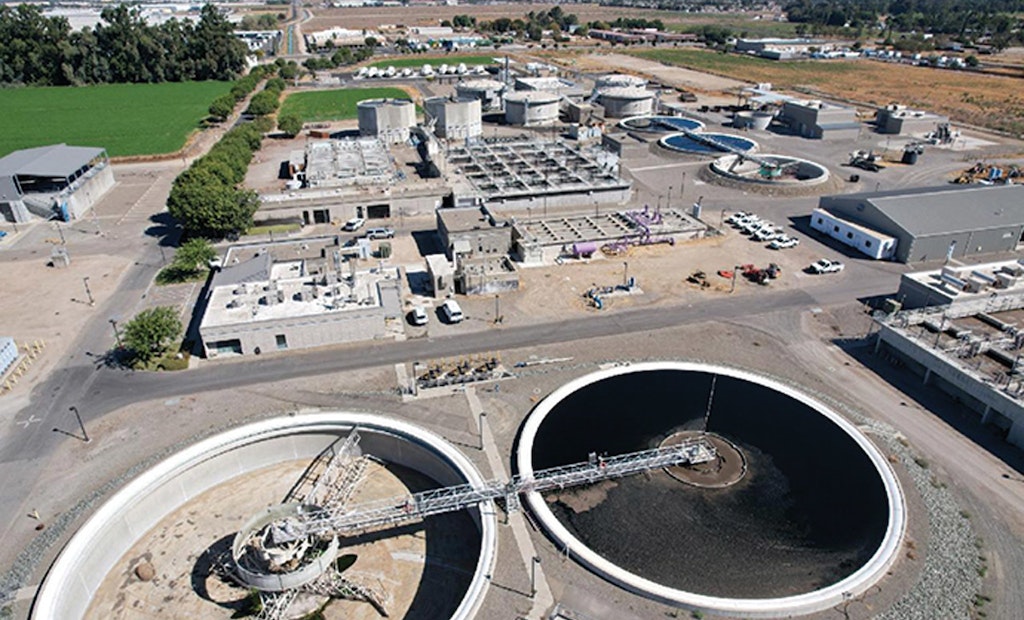Interested in Distribution?
Get Distribution articles, news and videos right in your inbox! Sign up now.
Distribution + Get AlertsAeration system promotes treatment with minimum energy usage
Problem
The Manteca (California) Wastewater Quality Control Facility (9.87 mgd design, 7.6 mgd average) seasonally accepts industrial food processing effluent. Water use reductions combined with population growth drastically increased influent BOD and total nitrogen.
Solution
The facility was designed by HERWIT Engineering with turbo blowers and complete aeration systems provided by APG-Neuros. The system includes dissolved oxygen control in multiple aeration zones. The aeration improvements produced electricity savings of 963,000 kWh/year, and the facility received energy rebates of $93,000. HERWIT and APG-Neuros further optimized aeration control to improve nitrogen removal in response to the increased nitrogen loadings. The ammonia limit is less than 1.5 mg/L, and the total nitrogen limit is less than 10 mg/L.
Result:
To improve nitrogen removal, the staff first added online nitrate and ammonia sensors in Zones B and E of one process train at each plant. Cycling of DO in Zone B between low and high values brought immediate improvement. In response to higher nitrogen loadings, the process was again improved using ORP probes in Zone B. The staff then worked with HERWIT and APG-Neuros to implement Zone B ORP cycling control throughout the process. Zone B no longer runs on DO control. 866-592-9482; www.apg-neuros.com

Biogas digester mixing system increases production at waste-to-energy operation
Problem
At a waste-to-energy operation in the United Kingdom, an anaerobic digester with a compressor mixing system had issues with foam, crusting at the tank top, and blocked pumps, all suppressing biogas production.
Solution
Engineering component specialists Hayley Group recommended a digester mixing system from Landia with a chopper pump Landia invented in 1950. With venturi nozzles, the pump has an external knife system that continuously reduces particle sizes and keep solids in suspension. Everything is accessible from outside the tank, reducing maintenance and improving site health and safety.
Result:
Gas production per cubic meter increased by more than 40%. “Our customer has not seen the Landia Digester Mixing System ever struggle to cope,” says Hayley Group engineer Rob Bentley. “Over time in the digester, plastics would float to the top, forming a blanket and then a crust, which eventually had to be dug out. The chopper pumps do not allow that buildup. 919-466-0603; www.landiainc.com
Sensors revolutionize city’s response to SSOs
Problem
The city of Winter Haven, Florida is prone to heavy rains that contribute to sewer overflows.
Solution
To mitigate overflows, the city deployed a network of 24 SmartCover sensors and rain monitors to provide real-time sewer level and trend analysis at potential overflow sites. The technology transmits data from a sensor on the underside of a manhole cover to an Iridium satellite network to relay reliable, uninterrupted sewer to a centralized online dashboard and mobile app. The sensor withstands harsh sewer system conditions and can be installed and serviced without confined space entry. SmartCover also provided an integrated event management platform with localized weather data from the National Oceanic and Atmospheric Administration to rapidly respond to issues before they become emergencies.
Result:
Within the first few hours, the city received an alarm that helped avoid a sewer overflow. A few months later, a lift station failed due to an electrical issue, and the city was able to pinpoint the location using the SmartCover technology and mobile app and respond within minutes to prevent an overflow. The event-driven monitoring system has revolutionized the city’s response by helping staff proactively respond to blockages and other potential overflow conditions, and schedule only needed maintenance and cleanings. 760-291-1980; www.smartcoversystems.com

Ion exchange technology used to treat uranium
Problem
Bridgeport, located in western Nebraska, had previously been able to pump water directly out of the ground and into the distribution system without treatment. It was later discovered that the water contained elevated levels of uranium. Classified as a human carcinogen known to cause kidney toxicity, contaminant levels are regulated by the EPA, and accordingly, Bridgeport needed to take action.
Solution
Following the successful pilot study, the system design included Tonka Water, a Kurita America Brand’s RidION system. The treatment process begins as water flows through three 8-foot-diameter ion exchange vessels. During this process, uranium adheres to the anion exchange resin, removing it from the water. The resin is regenerated on a monthly basis with a diluted brine solution that includes softened water. This process forces uranium off the resin bed, with the byproduct sent to waste. Softened water is used in the brine solution during the regeneration process to prevent precipitation of calcium solids due to elevated levels of sulfate.
Result:
The Bridgeport plant has been meeting treatment goals since its commissioning in early 2010. 866-663-7633; www.kuritaamerica.com






